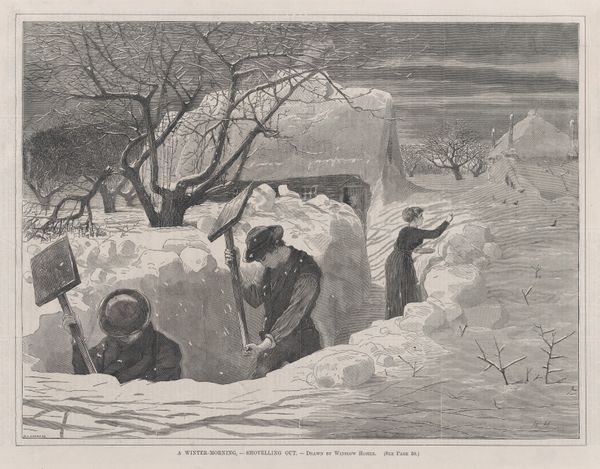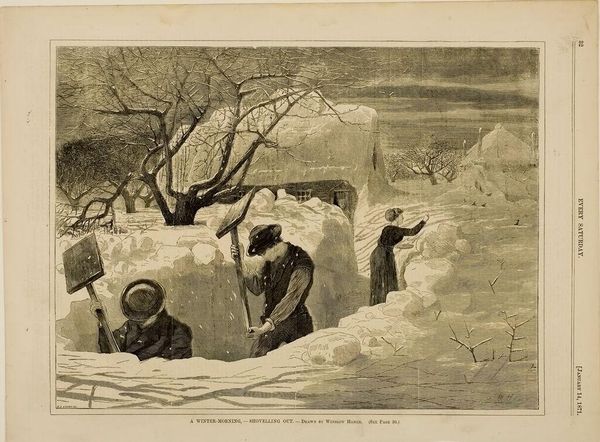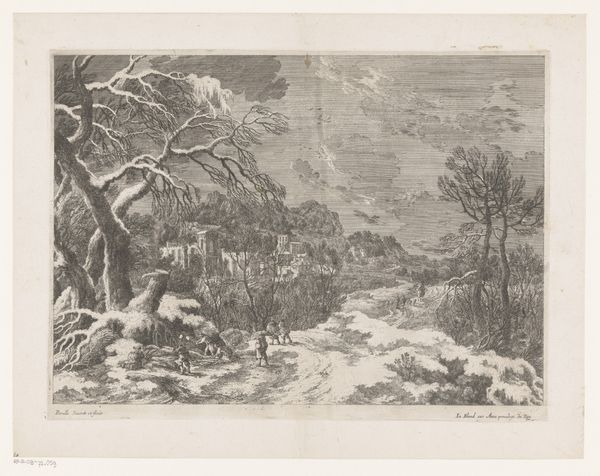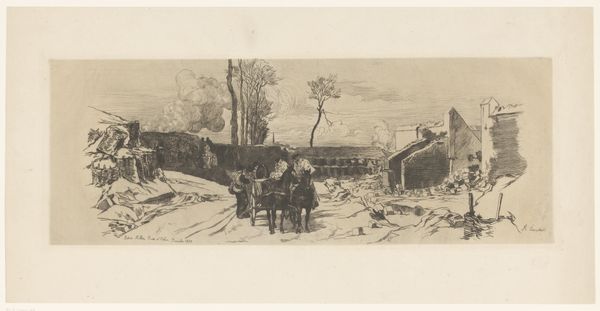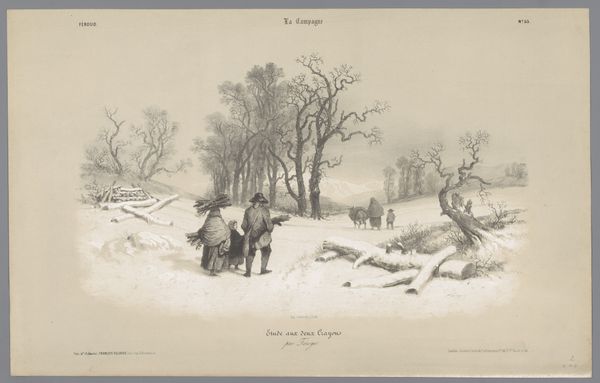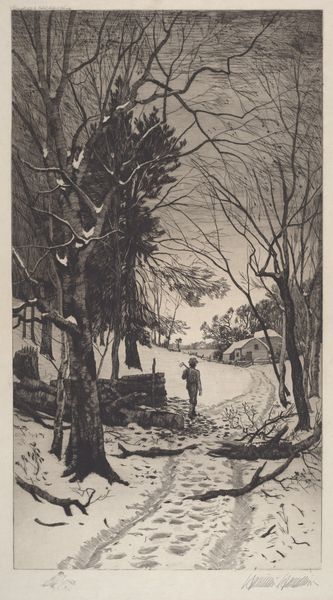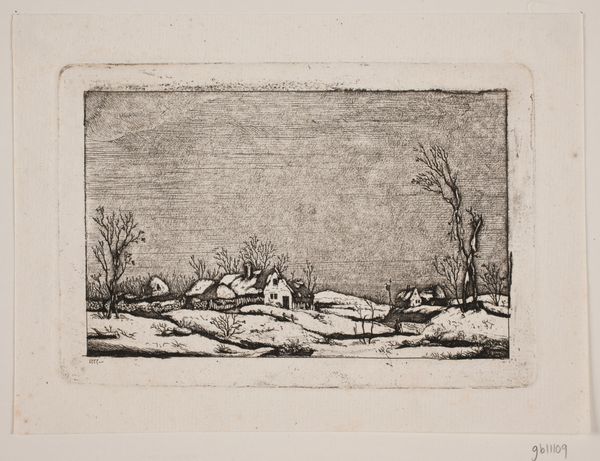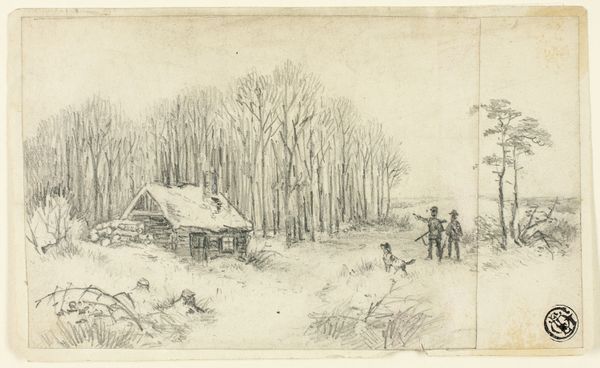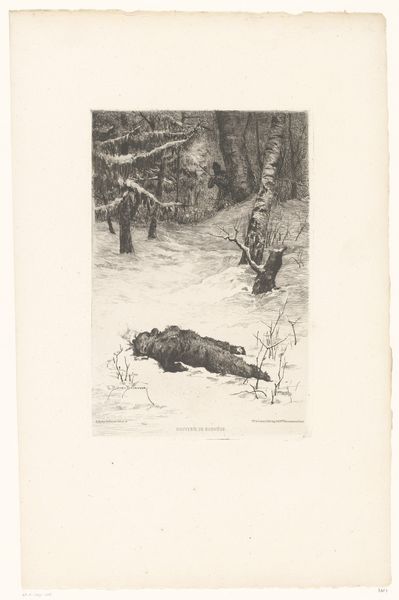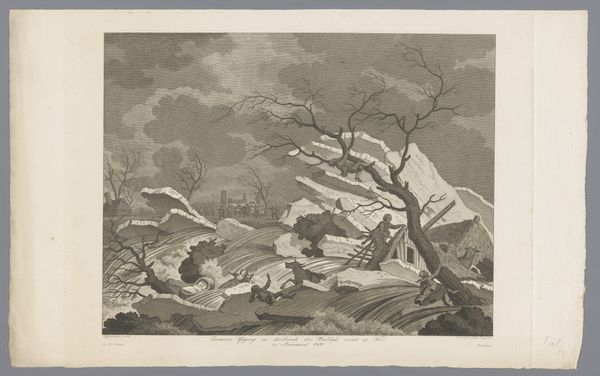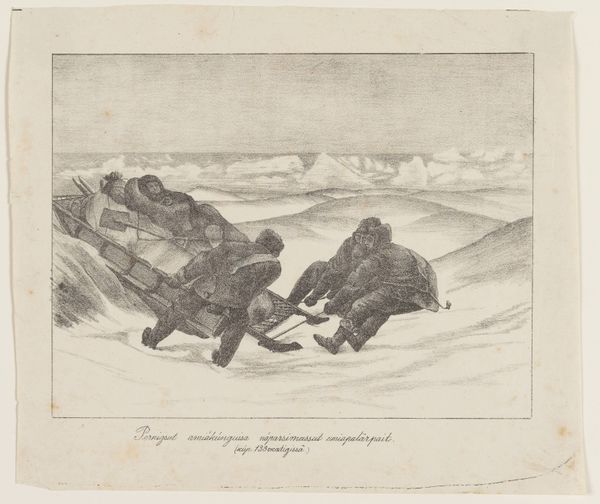
print, woodblock-print, woodcut, wood-engraving
#
narrative-art
# print
#
impressionism
#
landscape
#
woodblock-print
#
woodcut
#
genre-painting
#
wood-engraving
#
watercolor
#
realism
Dimensions: 8 7/8 x 11 13/16 in. (22.54 x 30 cm) (image)10 13/16 x 14 9/16 in. (27.46 x 36.99 cm) (sheet)
Copyright: Public Domain
Curator: This is Winslow Homer’s “A Winter Morning Shoveling Out,” a wood engraving that dates to 1871. Editor: It's gray. Overwhelmingly, deeply gray. But it also makes me shiver. That kind of bone-chilling cold that sinks right into you. I bet those bare trees creak when the wind picks up. Curator: Indeed. The monochrome palette emphasizes the harshness of the winter landscape, common across his early genre scenes illustrating rural American life. Note how Homer’s use of wood engraving—a process involving carving into a block of wood—results in fine, detailed lines, building textures to differentiate between snowdrifts and clothing. Editor: The figures feel buried alive, though. Look at the dark voids created by those shovel cuts. Makes you wonder if they’re digging out, or just digging deeper into the whole oppressive gray mess of it all. Is it optimistic or despairing? Curator: Perhaps both? This was made shortly after the Civil War. Winter, as a recurring motif in art, symbolizes death, the end, but is often coupled with the hope for a new spring to come. There’s an implied sense of resilience here; even in the face of adversity, life—illustrated by these determined figures—continues. They persist in reshaping their world, even if only to escape its immediate confines. The print's small size allows for quiet, domestic introspection too. Editor: I like the birds. Notice them scattered there on the snow—small, dark accents adding dynamism to an otherwise muted scene. Reminds me of those nature documentaries about arctic survival… only here it’s about folks dealing with everyday hardship, not penguins facing extinction. There's beauty and quiet desperation, all at once. It has an elegiac air, that moment of quiet while digging through snow. A meditation. Curator: Yes, the birds function almost as symbolic intermediaries—between the bleak earth and a somewhat obscured, hopeful sky—while grounding us within the scene's temporality. The snow creates this sense of purgatory; you are right. Homer captured that delicate balance perfectly in that singular moment. It offers us quiet dignity to appreciate, don't you think? Editor: Absolutely, it does make the small things… and endurance… that much brighter, too. Well said!
Comments
No comments
Be the first to comment and join the conversation on the ultimate creative platform.
